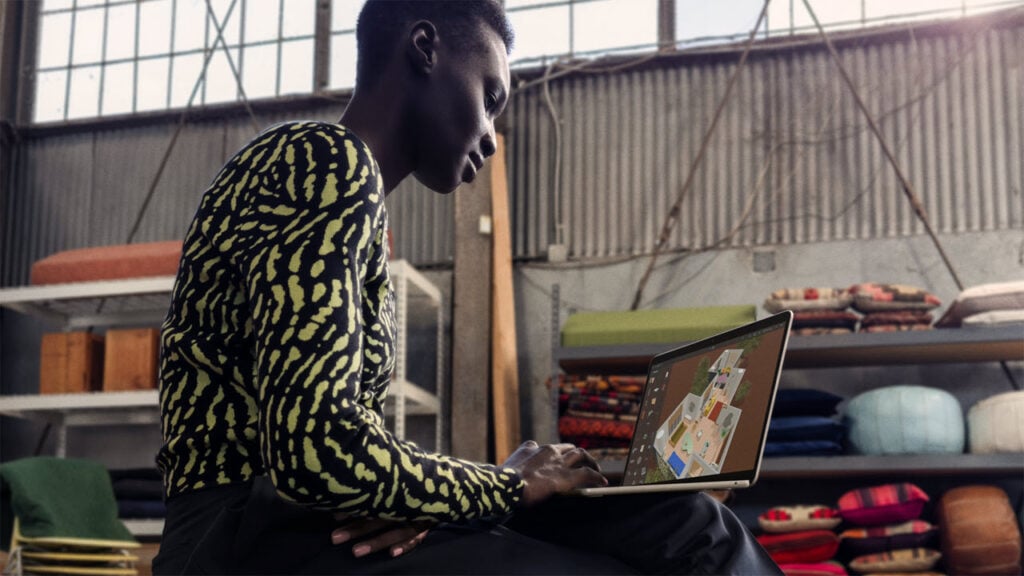Photo: Farknot Architect / Shutterstock.com
If you’ve been experiencing display issues with your MacBook, particularly a flickering screen or backlight problems, you might be facing a problem known as Flexgate. Flexgate is a display issue found in certain MacBook Pro and MacBook Air models resulting from a defective flex cable.
This article discusses Flexgate, its causes and symptoms, Macbok models affected by Flexgate, and a few tips to prevent It.
What is Flexgate?
Flexgate is a term used to describe a display problem in certain MacBook models caused by a faulty display flex cable. This thin cable connects the display to the logic board and transmits video signals. Due to a design flaw, this cable can become damaged over time due to the repeated opening and closing of the lid. This damage can lead to various display issues, including:
- Dim or flickering display.
- The backlight doesn’t work properly.
- Vertical bright lines along the bottom of the screen.
- Display that only works at certain angles.
Also read: What is the Utilities folder on Macbook?
Causes of Flexgate issue
The MacBook Pro line underwent a major makeover in 2016. Before 2015, the MacBook’s display controller or logic board was located inside the hinge cover at the bottom of the display. Since it was integrated into the lid, the wire connected to it ran through the hinge cover without any movement or disturbance.
Several cables are housed within the flex/ribbon. Usually, the backlight is the first to fail, leading to different backlight-related issues.

Also read: Everything you need to know about Website Tinting on iPhone
Flexgate symptoms
Flexgate, caused by a faulty display flex cable, affects MacBook displays in stages. Here’s how the symptoms worsen over time:
Stage 1: Stage light effect
- This occurs when the cable is damaged but not completely broken.
- You’ll see a flickering or uneven backlight resembling a stage light, often appearing as a bright band along the bottom of the screen.
Stage 2: Display blackout at certain angles
- The cable becomes cracked but maintains a loose connection.
- Opening the lid stretches the cable, causing a temporary disconnect.
- This results in the display going completely black if you open the lid past a certain point (usually beyond halfway).
Stage 3: Permanent black display
- The cable suffers a complete fracture.
- Backlight failure becomes permanent, leaving you with a black screen.
Stage 4: Vertical lines and display issues (less common)
- In some cases, the graphics flex cable might be affected instead of the backlight cable.
- This can cause vertical bright lines along the bottom of the screen, large vertical bars across the display, or complete display malfunction.
Also read: How to select multiple files on Mac?
Which MacBook models are affected by Flexgate?
Flexgate primarily affects 13-inch and 15-inch MacBook Pro models from 2016 and 2017. However, some reports suggest that the issue might also extend to certain MacBook Air models manufactured from 2018 onwards, which share a similar display design. The most common affected models are listed below:
- A1708 – MacBook Pro (13-inch, 2016 Without-Touch Bar)
- A1708 – MacBook Pro (13-inch, 2017 Without-Touch Bar)
- A1706 – MacBook Pro (13-inch, 2016 With-Touch Bar)
- A1706 – MacBook Pro (13-inch, 2017 With-Touch Bar)
- A1707 – MacBook Pro (15-inch, 2016 With-Touch Bar)
- A1707 – MacBook Pro (15-inch, 2017 With-Touch Bar)

Also read: How to get a free iPad with EBT?
Is there an official Apple fix for Flexgate?
Apple did acknowledge the issue and implemented a 13-inch MacBook Pro Display Backlight Service Program in 2019.
This program offers free repairs for eligible MacBook Pro models within five years of purchase or three years from the program start date (whichever is longer). However, the program has limitations and may not cover all affected models.
Tips to prevent Flexgate
There is no guaranteed way to prevent Flexgate, but there are a few things you can do to minimise the risk:
- Avoid opening the screen/lid to its maximum angle.
- Avoid opening and closing the screen/lid with excessive force.
- Don’t put excessive pressure on the screen/lid.
- Keep your MacBook in a cool, dry environment.
Also read: How to fix Error 79: Inappropriate file type or format?






